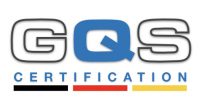Data Operations
Data management refers to the aggregation of an wide variety of techniques, practices, and tools which link every stages belonging to the data lifecycle to maximize value from information. Included in the wide field of data management would be the strategies, plans, policies, and systems produced, implemented, handled, or maintained to regulate, protect, optimize, protect, and protect the data collected by a business. This also includes the delivery of business functions and the showing of those regulations and procedures among different members of the organization for different amounts. All activities involve something for data management.
File-sharing companies, such as many provided by firms like Sunlight Microsystems, will be examples of metadata tools. Metadata provides a means for describing this of a data item such as the program titles, user titles and security passwords, description lines, license limitations, version volumes, etc . Software tools for metadata collection are available on various desktop and server-based operating systems. A metadata tool can be explained as a programming tool that maintains and updates the meaning and opportunity of metadata. Many metadata tools are designed as stand-alone applications, have the ability of controlling simple and plain and simple quantities of data. More powerful metadata managing equipment can be incorporated in to data management platforms as well as into applications and info storage products themselves.
Many platforms to get managing data management use either the Windows server platform and also the UNIX machine platform . The Linux and Mac OPERATING-SYSTEM platforms both equally use their own proprietary data systems. UNIX, however , allows both Glass windows and Apache to inter interact with one another and to remotely managed applications. The Novell NetWare Information Program (NIS) can be described as free, free solution for network data management. NIS manages and stores details for machines, client pcs, workstations, redirecting equipment, network printers, personal computers and computers running various other Novell application.
The meta tag provide metadata about a subject. Meta marking information is needed by Articles Management Systems (CMS) such as the Microsoft Office Suite to explain the characteristics of any object. The meta tag help computer systems understand the file format and subject matter of an picture or file. Meta tags double to indicate the keywords of a word or phrase within a Web page or file. These tags are useful just for allowing search engines like google to locate specific items in a database or perhaps index. Expert data supervision and content management systems must furnish suitable interfaces for search engines like google to use meta tags and the expert data management application must be sure that the content manager and it is sub-applications admiration the definition of meta-tags.
Another part of data administration is gain access to control. Gain access to control gives limits on how an authorized person may access data. Certified users can be assigned documentation or get levels. Administrators of a info management system determine who has access to which data and how often these users are official to access data. Data that is intended only for review and analysis is usually stored in a protected storage space that cannot be shared with anyone but individuals who have been of course permission by the data supervision policy.
Effective info management requires appropriate and powerful use of most storage and server functions. This means applying adequate storage area and servers to get storing data. Storing info outside of the company is normally ineffective and may even increase the likelihood of theft or perhaps damage to storage area devices. Additionally , companies that engage in info storage operations pr-formula.online own a responsibility to ensure that safe-keeping of essential data is completed in compliance with all pertinent laws, regulations, policies and procedures plus the company’s guidelines and practices concerning the appropriate safe-keeping of firm information.
